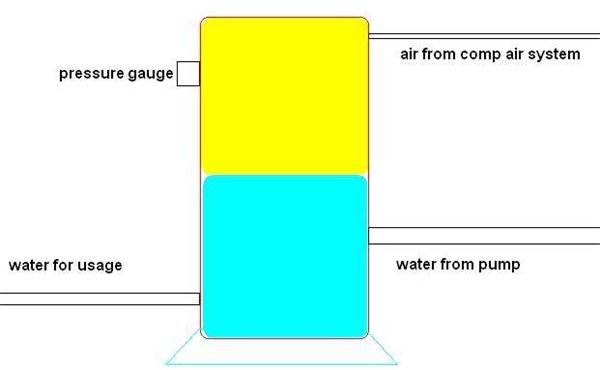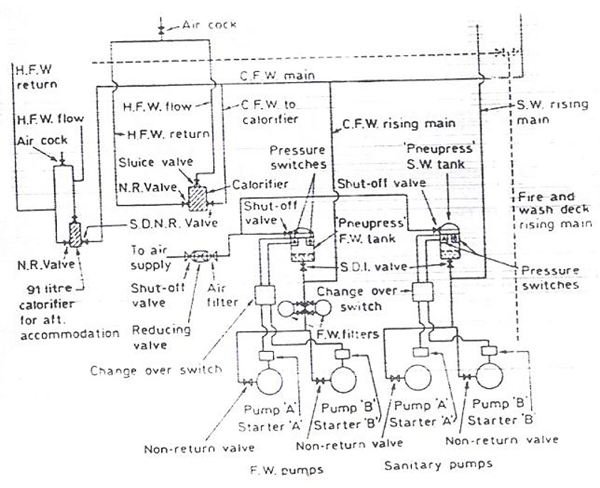Domestic Water Supply Equipment on Board Ships
Introduction
Water is life and although there is no shortage of water at sea, it is not of much use to human beings since drinking sea water can be very harmful. Read this article to know about the effects of drinking sea water. Hence we need to generate fresh water on board a ship since it would be difficult to store and preserve water for long voyages in storage tanks. Hence the normal practice is to generate drinking water using fresh water generators and then store it on the ship. But how is this water supplied to the accommodation of the ship? Learn about the domestic water supply equipment and arrangement on a ship.
Water Supply System
Water is a scarce resource on the ship and hence it is necessary to use it intelligently. On of the areas where water could be saved is to use sea water for flushing etc in sanitary system of the ship. This is a good idea but experience shows that such systems need lot of maintenance since sea water eats up the system pipelines and valves etc very fast as compared to fresh water. Hence in some ships, there are fresh water lines for sanitary systems as well. This is more true in case of ships have vacuum type flushes which do not require large quantities of water.
The diagram above shows a fresh water as well as sanitary water supply system of the ship. The main points which can be understood better by correlating them to the sketch are as follows.
There are two sets of pumps – sea water supply to sanitary system and fresh water supply to rest of the accommodation, kitchen, galley etc.
There are two separate storage tanks supplying water to both these systems. These tanks are known as Pneupress tanks. This basically means pneumatic pressure tanks. This is so because these tanks are pressurized using compressed air and hence this pressure provides the pumping power to the water.
There are pressure switches inside these tanks. Whenever the pressure of air falls inside the tank, it is reinstated by adding more water or air. Mostly this system is automatic and the level of water inside the tank is maintained constant.
The calorifier is fitted to heat up the water which might be necessary for cold climate conditions or otherwise.
Ultimately the water is supplied to a cold water main line, hot water main line and sanitary water main line. These lines then pass on this water to the actual usage points in the accommodation, galley, toilets and so forth.
In many ships there might be an ultraviolet light system fitted along with these tanks so that it helps to reduce bacteria in the water. Yet it is mandatory to add cleaning agents as per Marine Notices issued time to time by the IMO.
Apart from the standard diagram give above, you can also take a closer look at the Pneupress tank which explains its basic working principle via the sketch below. The two colours represent air and water which coexist under a specific pressure in the tank. Whenever the pressure falls below a certain level, the pump cuts in and fills the water to the same pressure. The level of water is maintained steady somewhere above the half way mark.

Just in case the air leaks out of the system and rise in water level is not sufficient to maintain pressure, air can also be added to the tank from the air inlet line. This helps to ensure an optimum level of water in the tank whereas maintaining pressure at the same time.
